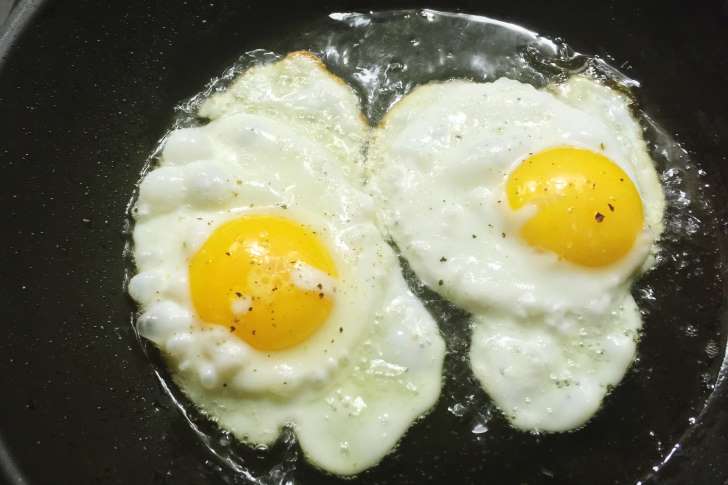It is easy to understand why some people claim that a fried egg is the most popular breakfast food. If you don’t have time for a make-ahead breakfast casserole, a fried egg is a great option for the morning meal. As much as Southerners love their picnic favorite, the deviled egg, we also know our way around a fried egg. Top a piece of toast with a fried egg for a simple and quick meal, create a delicious breakfast salad using baby spinach leaves, sliced avocado, tomato and a fried egg, or top a stack of hot pancakes with a sizzling fried egg. Whether you like your fried egg sunny-side-up (cooking the egg only on the bottom), over-easy (flip the egg over once the bottom is set and cook it slightly), or over-well (cooked until the yolk is firmly set), frying an egg is probably one of the first things a novice cook learns to do. As simple as it seems, there are a few mistakes to avoid in order to fry the perfect egg.
Don’t Use High Heat
Cooks will differ over how hot to preheat the skillet- some say use a medium-high heat, others say to use the lowest possible heat (this works well if you want a sunny-side-up fried egg.) Both camps agree, however, that you should never use high heat. The egg whites will puff up and the edges will get brown and crispy before the yolk even begins to cook. Using medium heat, it should take about 3-4 minutes to cook a nice fried egg with tender whites and a warm, runny yolk. Don’t overcook the eggs or the whites will get tough and chewy and the yolks will be dry and chalky.
Don’t Break The Yolk
A runny, golden yolk is one of the delicious elements of a fried egg. The operative word for keeping yolks intact is “gentle.” Gently crack the egg into a small bowl (this also gives you a chance to remove any broken bits of egg shell), then place the bowl close to the side of the skillet and gently slide the egg into the frying pan – don’t pour it in from high above the skillet or the yolk might break. If you want an over-easy egg, you will have to gently flip it. This isn’t like the dramatic show we all make when flipping pancakes, but a soft, gentle turning of the egg to the other side.
Do Use The Right Pan
Nothing ruins the looks of a perfectly fried egg like tearing it apart as you try to scrape it out of the pan. Traditional non-stick pans work great, but you can also use your favorite well-seasoned cast iron skillet. If you don’t use either type of pans, you will need to use extra butter or oil so the egg won’t stick to the pan and the yolk won’t break. If you are frying two or more eggs at the same time, make sure your pan is large enough that the eggs will stay separated. If they run together as they cook, you will have to cut them apart, which is fine if you don’t mind square fried eggs.












